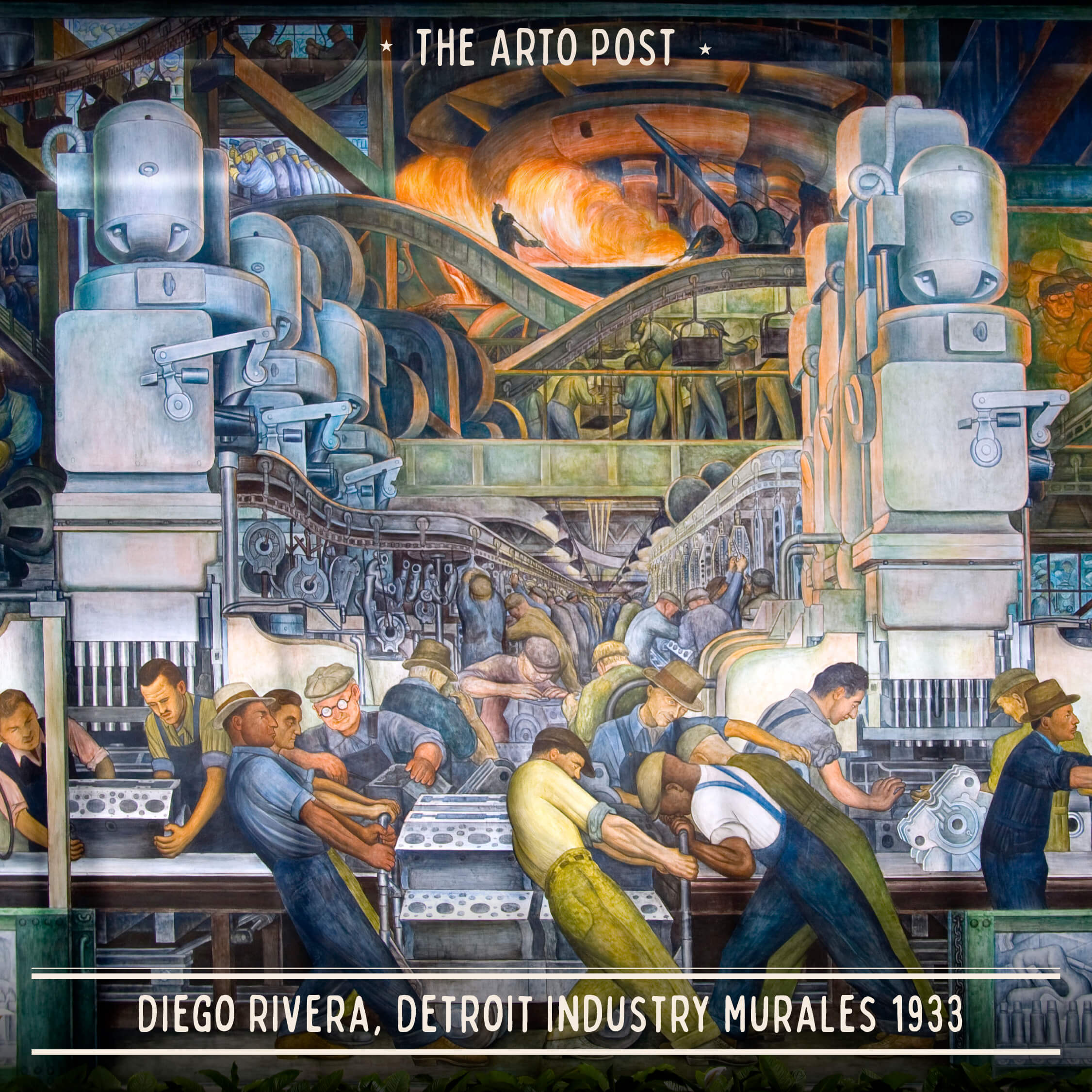Detroit Industry Murales
Category:

DIEGO RIVERA DETROIT INDUSTRY MURALES 1932-33
Diego Rivera created this mural in the courtyard of the Detroit Institute of Art between 1932 and 1933.
The artist spent three months designing the 27 panels depicting Detroit’s industrial development; he made hundreds of sketches, accompanied by a photographer who captured the best shots.
He said in his biography: “I walked for miles in the huge factories of Ford, Chrysler, Edison, Michigan Alkali, and Parke-Davis.
I was filled with enthusiasm. All my youthful interest in mechanical games had been transformed into a delight in machines and their significance for mankind – their self-organization and liberation from drudgery and want. That is why I placed the collective hero, man and machine, higher than the heroes of art and traditional legends. I feel that in the society of the future, as today, man and machine will be as important as air, water and sunlight”.
It took eight months of painstaking work: at night, workers prepared the walls; at dawn, Rivera’s assistants traced the outlines of the figures with a stencil; and during the day, the artist created the final design.
Like an assembly line, the work never stopped.
In his fresco, the meaning of the assembly line goes beyond the technological aspect of the means of the time, but represents a system of relationships, the energy of the chaining together of people, machines and means that allows the collective valorization of the workforce.
Today, his murals can be considered precursors of public art, especially street art, due to their non-conformist and provocative content.
The artist spent three months designing the 27 panels depicting Detroit’s industrial development; he made hundreds of sketches, accompanied by a photographer who captured the best shots.
He said in his biography: “I walked for miles in the huge factories of Ford, Chrysler, Edison, Michigan Alkali, and Parke-Davis.
I was filled with enthusiasm. All my youthful interest in mechanical games had been transformed into a delight in machines and their significance for mankind – their self-organization and liberation from drudgery and want. That is why I placed the collective hero, man and machine, higher than the heroes of art and traditional legends. I feel that in the society of the future, as today, man and machine will be as important as air, water and sunlight”.
It took eight months of painstaking work: at night, workers prepared the walls; at dawn, Rivera’s assistants traced the outlines of the figures with a stencil; and during the day, the artist created the final design.
Like an assembly line, the work never stopped.
In his fresco, the meaning of the assembly line goes beyond the technological aspect of the means of the time, but represents a system of relationships, the energy of the chaining together of people, machines and means that allows the collective valorization of the workforce.
Today, his murals can be considered precursors of public art, especially street art, due to their non-conformist and provocative content.
In the image “Detroit Industry Murals,” detail of the north wall, Diego Rivera 1932-33.
This and other interesting facts can be found in the Art and Science album.
Explore the Art and Science album!